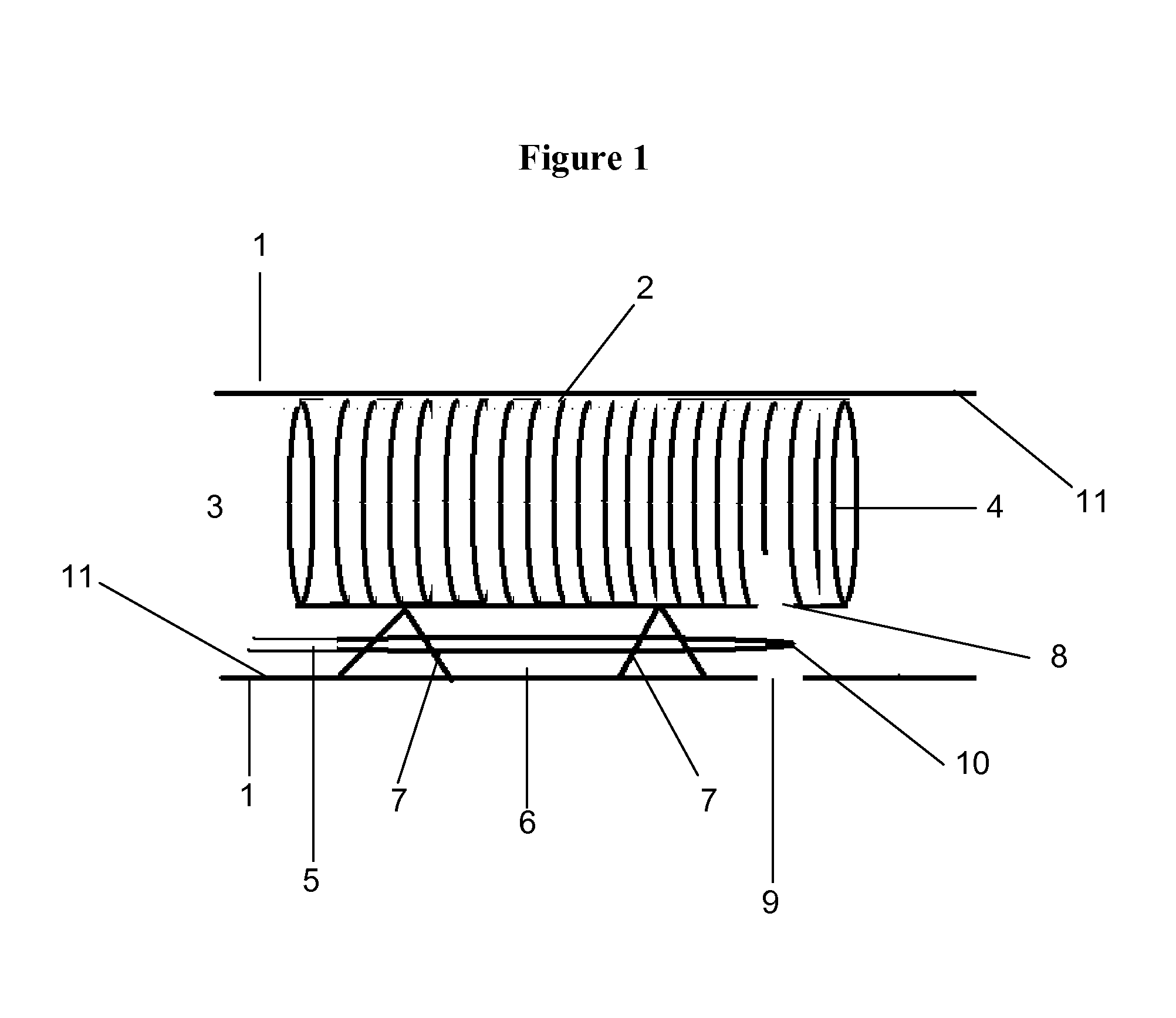Method and device for graft fenestration
a graft and fenestration technology, applied in the field of graft fenestration, can solve the problems of additional technical challenges, life-threatening complications for patients with acute aortic dissection, and the complexity of total alignment of these pre-made fenestrations still requires partial device deploymen
- Summary
- Abstract
- Description
- Claims
- Application Information
AI Technical Summary
Benefits of technology
Problems solved by technology
Method used
Image
Examples
Embodiment Construction
[0092]The present invention relates generally to the field of the treatment of aortic disease and in particular to endoluminal aortic grafts, which allow accurate placement of a covered stent or tube in the aorta and a means to create fenestrations within the covered stent or tube and or surrounding tissue. In particular the covered stent is capable of being deployed and positioned anywhere within the aorta and there is a means to create fenestrations in situ in vivo. Fenestrations can be created within the graft or surrounding tissues. These fenestrations serve one of two purposes: firstly to prevent occlusion of side branches off the aorta by aortic tissue and or by the graft when it is fully deployed and secondly to reestablish blood flow such as in an aortic dissection that may complicate side branch blood flow by means of a dissection flap.
[0093]A graft that is placed in the aorta or other body lumen can be any of the following or combinations thereof: a stent that are covered ...
PUM
 Login to View More
Login to View More Abstract
Description
Claims
Application Information
 Login to View More
Login to View More - R&D
- Intellectual Property
- Life Sciences
- Materials
- Tech Scout
- Unparalleled Data Quality
- Higher Quality Content
- 60% Fewer Hallucinations
Browse by: Latest US Patents, China's latest patents, Technical Efficacy Thesaurus, Application Domain, Technology Topic, Popular Technical Reports.
© 2025 PatSnap. All rights reserved.Legal|Privacy policy|Modern Slavery Act Transparency Statement|Sitemap|About US| Contact US: help@patsnap.com



